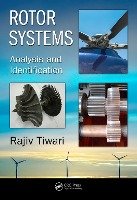The purpose of this book is to give a basic understanding of rotor dynamics phenomena with the help of simple rotor models and subsequently, the modern analysis methods for real life rotor systems. This background will be helpful in the identification of rotor-bearing system parameters and its use in futuristic model-based condition monitoring and, fault diagnostics and prognostics. The book starts with introductory material for finite element methods and moves to linear and non-linear vibrations, continuous systems, vibration measurement techniques, signal processing and error analysis, general identification techniques in engineering systems, and MATLAB analysis of simple rotors.Key Features: Covers both transfer matrix methods (TMM) and finite element methods (FEM) Discusses transverse and torsional vibrations Includes worked examples with simplicity of mathematical background and a modern numerical method approach Explores the concepts of instability analysis and dynamic balancing Provides a basic understanding of rotor dynamics phenomena with the help of simple rotor models including modern analysis methods for real life rotor systems.

